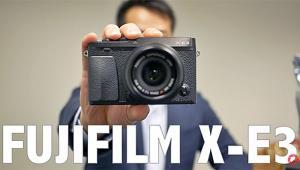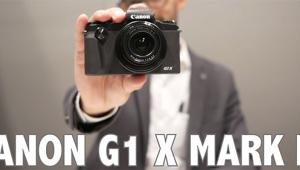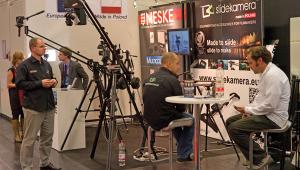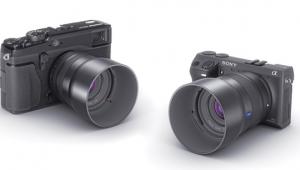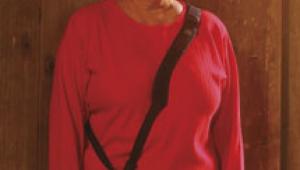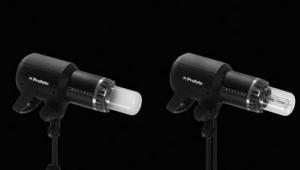Special Report: photokina
Cameras: Medium And Large Format Update & A New (And Old) Rangefinder 35 Page 2
Not a surprise, because it had been announced before, was the marriage between Hasselblad and Imacon and their new fully integral 22-megapixel H1D that doesn't take film (unlike the regular H1). This is without question the most elegant and lightest of the three 22-megapixel cameras described but at 18,900 euros (over $2400--in September 2004 the dollar had lost close to 50 percent against the euro in just under four years) it is not cheap. There were also three new Hasselblad lenses, the HC 100mm f/2.2, HC 120mm f/4 Macro, and HC 300mm f/4.5, all in electronic shutters, for the H-system.

Large Format
Like medium format, this is in serious decline professionally. And as with medium
format, this has a lot to do with the false pressures of advertising photography,
where everything is wanted yesterday and then sits on someone's desk for
a week. As the old joke goes, "I want it yesterday! If I wanted it today,
I'd ask for it tomorrow!"
The only real introduction from a major manufacturer was the Linhof M679cs (www.hpmarketingcorp.com),
a further (and easier to use) evolution of the M679 for digital and (if you
insist) rollfilm use. Cambo (www.calumetphoto.com)
also showed a new lens, the Schneider Digitar 35mm f/5.6 for their "pancake"
Cambo Wide DS system.

In the fine art and recreation market, however, large format is alive and well.
The Shen-Hao 5x12" camera has already been mentioned. The other two camera
introductions--in prototype form only--were an ultra-cheap build-it-yourself
4x5" camera from Camera Bellows/Lee Filters (www.leefiltersusa.com)
and a "pancake" wide angle from Fotoman using much the same technology
as the Fotoman 512.
The UK aim price of the Camera Bellows camera (no name yet) was under GBP 150,
rather over $250, but the US selling company hopes to drive the dollar price
down still further. This is less than the price of a 4x5" back from many
manufacturers! You can make the camera in a day, allowing for glue drying times:
there is less than an hour of actual assembly time involved. There are full
front movements (rise/fall, swing, tilt) but no back movements. I've been
promised a prototype for evaluation and the camera should be on the market shortly
after you read this.

Then there were two ultra large format Fine Art lenses from Schneider (www.schneideroptics.com),
a 550mm f/11 and an 1100mm f/22 in Copal 3 shutters and a shutterless 1100mm
f/14 with Waterhouse stops (!) described as "plug-in diaphragms"
in the brochure. Minimum aperture in all cases is f/128. The 550mm f/11 is a
six-glass, two-group symmetrical with more than a nod to the immortal Dagor
and has 122mm filter threads front and rear while the 1100mm is a four-glass,
four-group symmetrical with 105mm filter threads front and rear: at f/22 oblique
spherical aberration is unimportant even at full aperture and astigmatism and
field curvature are inherently low in such a design anyway.
These monsters, appropriately named the XXL series, are traditionally finished
in lacquered brass and buyers can have their names engraved on them at no extra
cost. Both have a 900mm image circle: a yard, in plain English. In other words,
they will cover 20x24" with a modicum of movement and lots of movement
on anything smaller, including "baby" formats like 8x20".
But they weigh well over 5 lbs each.
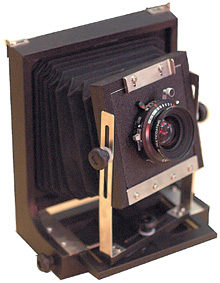
It's a tiny market, but it's big enough for a giant like Schneider
to bother. Sounds good to me! They also had two new digital lenses, 180mm and
210mm APO-Digitars.
Schneider's rivals Rodenstock (www.hpmarketingcorp.com)
offered only one new conventional film lens, the APO-Sironar-S 100mm f/5.6 with
a 155mm image circle at f/22: plenty of movement on 6x9cm and even 6x12cm, but
only 1mm or so at 4x5". They also had a couple of new HR digital lenses,
180mm f/5.6 and (as a Sinaron) 28mm f/4.5. Just one complaint here: the stand
was badged Linos, which no photographer has ever heard of, instead of Rodenstock,
which everyone knows. This kind of arrogance is foolish: more than one company
has lost significant market share or even gone bankrupt because customers don't
recognize the new-look trendy name. They then assume the old company has gone
out of business and buy from a competitor whose name they do recognize.

Pick Of The Show
For the dedicated film user there was plenty to choose from: three new 617 cameras,
one new 623, a new prototype ultra low cost 4x5" camera in kit form, two
fascinating new large format lenses from Schneider, and more. But the new Zeiss
Ikon manual-focus rangefinder system was the hit of the show for me.
The last great manual-focus, interchangeable-lens rangefinder cameras from Zeiss
were the Contax IIa and IIIa. They ceased production over 40 years ago, and
the original II/III dated back to 1936 (1932 for the Contax I). The Zeiss Ikon
leapfrogs the intervening decades, offering through-lens exposure automation
alongside full manual control: it is very much a camera of the 21st century.
The Contax name is licensed to Kyocera, who make the G-series interchangeable-lens
autofocus cameras and are not associated with this particular project, so it
is a Zeiss Ikon. But it has a traditional Contax feel: I think of it as a Contax
V, a successor to the IV that should have been made but wasn't.
Even more exciting than the camera are the new lenses: 15mm f/2.8, 21mm f/2.8, 25mm f/2.8, 35mm f/2, 50mm f/2, and 85mm f/2. These are in Leica four-claw M-bayonet mount, and focus in the same direction as Leica lenses: historically, of course, Zeiss lenses focused "backward." They have 1/3 stop click-stops on the equidistant aperture stops; they look utterly lovely; and they handle very nicely indeed. The 15mm f/2.8 and 85mm f/2 are German-built but the other focal lengths (and the camera) are made in Japan to Zeiss designs and with Zeiss quality control. Best of all, they should be about 2/3 the price of their Leica equivalents. I need more M-fit lenses to go on my Leicas and Voigtländers like I need a hole in the head; but yet, but yet...
- Log in or register to post comments
